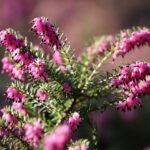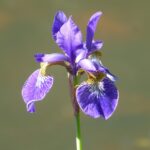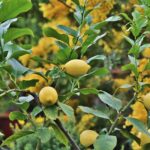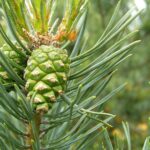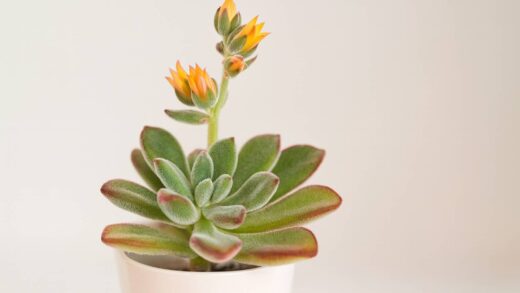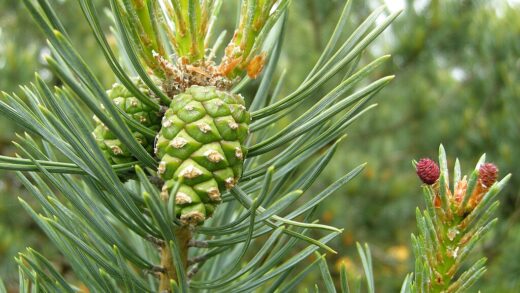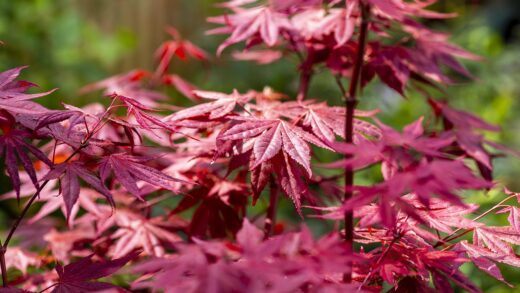Pruning is a vital horticultural practice that, when performed correctly and at the right time, can significantly enhance the health, structural integrity, and aesthetic appeal of a silk acacia. This fast-growing tree can develop a somewhat unruly habit if left to its own devices, often producing weak branches and a crowded canopy. Through judicious pruning, a gardener can guide the tree’s growth, creating a stronger, more resilient, and more visually pleasing specimen. It is a proactive intervention that shapes the tree’s future, preventing problems before they arise and maximizing its ornamental potential.
The primary objectives of pruning are multifaceted. For young trees, the focus is on formative or structural pruning, which aims to establish a strong, well-spaced framework of branches that will support the tree throughout its life. For mature trees, the emphasis shifts to maintenance pruning, which involves the removal of dead, damaged, or diseased wood to maintain the tree’s health and vigor. In all cases, pruning can be used to improve air circulation within the canopy, which helps to reduce the incidence of fungal diseases, and to control the tree’s overall size and shape.
Understanding the tree’s natural growth habit is key to successful pruning. The silk acacia typically grows in a vase shape with a broad, spreading, umbrella-like canopy. Pruning should aim to enhance this natural form rather than fight against it. It is also important to recognize that the tree flowers on new wood produced during the current growing season. This has significant implications for the timing of pruning, as removing wood at the wrong time of year can inadvertently remove the developing flower buds.
A common mistake is to either neglect pruning altogether, allowing the tree to become a tangle of weak and crossing branches, or to prune too aggressively, which can stress the tree and spoil its natural shape. The best approach is one of regular, considered intervention. A little bit of thoughtful pruning each year is far more beneficial than a major, drastic overhaul every five years. This consistent care ensures the silk acacia remains a safe, healthy, and beautiful asset in the landscape.
The main objectives of pruning
One of the most critical objectives of pruning, especially for young trees, is to establish a strong structure. The silk acacia has a tendency to form narrow, V-shaped crotches where branches connect to the trunk. These connections are inherently weak and are prone to splitting apart as the branches grow heavier with age or are subjected to stress from wind, snow, or ice. Formative pruning involves selecting main branches that have a wider, more U-shaped angle of attachment, which creates a much stronger and more durable structure for the life of the tree.
More articles on this topic
Maintaining the health of the tree is another primary goal. This is achieved by regularly removing what are often referred to as the “three D’s”: dead, damaged, and diseased wood. Dead branches serve no purpose and can be a safety hazard as they may fall unexpectedly. Damaged branches, such as those broken in a storm, should be pruned back to a healthy point to prevent decay from entering the wound. Diseased wood must be removed to prevent the pathogen from spreading to other parts of the tree. This type of sanitation pruning can be done at any time of year.
Pruning also plays a crucial role in managing the density of the canopy. A canopy that is too thick with crossing and rubbing branches can have several negative consequences. The rubbing creates wounds on the bark, which can become entry points for pests and diseases. Poor air circulation within a dense canopy creates a humid microclimate that is conducive to the development of fungal leaf diseases. By selectively thinning out some of the interior branches, a gardener can improve light penetration and air movement, leading to a healthier tree overall.
Finally, pruning is used to control the size and shape of the tree, ensuring it fits appropriately within its space in the garden. This might involve shortening branches that are growing too close to a building, a walkway, or power lines. It can also involve removing low-hanging branches to create clearance for mowing or walking underneath the tree, a process known as “crown lifting.” This type of pruning helps to integrate the tree safely and aesthetically into the human-designed landscape.
The best time of year to prune
The timing of pruning operations is critical and depends on the objective. For major structural pruning, such as removing large branches or significantly reshaping the tree, the best time is during the dormant season. Late winter or very early spring, before the tree has started to push out new growth, is ideal. Pruning during dormancy has several advantages. The absence of leaves provides a clear view of the tree’s branching structure, making it much easier to decide which branches to remove. Furthermore, the tree is not actively growing, so the stress of pruning is minimized, and the risk of “bleeding” sap from the cuts is low.
More articles on this topic
Pruning in late winter also ensures that the wounds are exposed for the shortest possible time before the tree begins its active growth cycle in the spring. As the sap starts to rise and growth commences, the tree will quickly begin the process of compartmentalizing and sealing over the pruning wounds. This rapid healing response helps to protect the tree from infection by decay-causing organisms. This is why major pruning should be avoided in the autumn, as the wounds would remain open all winter, a period when the tree’s defense systems are not active.
For minor pruning, such as the removal of dead or broken branches, this can be done at any time of year as soon as the problem is noticed. There is no benefit to leaving a broken or dead branch on the tree. Light trimming to shape the tree or to remove a stray, awkwardly placed shoot can also be done during the growing season. However, it is important to avoid heavy pruning during the summer. Removing a large amount of green, leafy foliage during the height of the growing season can significantly reduce the tree’s photosynthetic capacity and place it under considerable stress.
It is particularly important to avoid pruning a silk acacia in mid- to late spring. The tree flowers on the new growth that it produces in late spring and early summer. Pruning the tree just before it is about to produce this new growth can result in the removal of the very wood that would have developed the season’s flowers. By completing all major pruning tasks before the new growth begins, the gardener ensures that the tree’s flowering potential for the upcoming summer is not compromised.
Techniques for structural pruning of young trees
Formative pruning should begin a year or two after the tree has been planted and has had time to establish its root system. The first step is to visualize the desired future shape of the tree. For a silk acacia, this is often a single-trunk specimen with a well-spaced canopy, or a multi-trunked form with three to five main stems originating from near the base. The choice between these forms is a matter of aesthetic preference, but the decision should be made early.
If a single-trunk form is desired, a central leader must be selected. This is the main, upright stem that will become the trunk. Any competing upright stems that are similar in size and vigor should be removed or shortened (subordinated) to encourage the dominance of the chosen leader. Over the first few years, the goal is to select and develop a series of scaffold branches—the main limbs that will form the primary structure of the canopy. These branches should be well-spaced both vertically and radially around the trunk, like spokes on a wheel, to ensure a balanced structure.
When selecting scaffold branches, pay close attention to the angle of attachment. As mentioned, branches with wide, U-shaped crotches are structurally far superior to those with narrow, V-shaped crotches. Any branches with weak, narrow attachments should be removed while they are still small. It is far better to make a small pruning cut on a young tree than to have to remove a large, mature limb that has become a hazard years later. The ideal scaffold branches will have an angle of attachment between 45 and 60 degrees to the main trunk.
All pruning cuts must be made correctly to ensure proper healing. Never leave a long stub when removing a branch, and never make a flush cut that removes the branch collar. The branch collar is the slightly swollen area of tissue at the base of a branch where it connects to the trunk. This collar contains specialized cells that are responsible for closing over the wound. The proper pruning cut is made just outside this collar, leaving it intact on the tree. This will result in the formation of a neat, donut-shaped ring of woundwood as the tree heals.
Maintenance pruning for mature trees
Once a silk acacia is mature and has a well-established structure, the focus of pruning shifts from development to maintenance. The primary task becomes the annual inspection and removal of any dead, damaged, or diseased wood. This is the most fundamental aspect of maintaining the health and safety of a mature tree. A thorough inspection should be done at least once a year, with the dormant season being an excellent time to get a clear view of the entire branch structure.
In addition to removing the three D’s, maintenance pruning for a mature tree also involves thinning the canopy as needed. This is done to improve air circulation and light penetration. The goal is not to shear the tree into an artificial shape but to selectively remove entire branches back to their point of origin. This includes removing any branches that are crossing or rubbing against each other, as well as any that are growing back into the center of the tree. A good thinning cut is unnoticeable and makes the canopy appear more open and natural.
As the tree ages, it may be necessary to perform some crown lifting to maintain clearance underneath the canopy. This involves removing the lowest branches to raise the height of the canopy from the ground. This should be done gradually over a period of several years rather than removing many large, low branches all at once, which can create large wounds and unbalance the tree. The goal is to maintain the tree’s graceful, weeping habit while ensuring it is practical for its location.
Drastic pruning, such as “topping” a tree (indiscriminately cutting the top off), should be avoided at all costs. Topping is an incredibly damaging practice that creates large wounds that cannot heal properly and stimulates the growth of a dense cluster of weak, poorly attached sprouts just below the cut. These sprouts are highly prone to breaking and will make the tree more dangerous in the long run. If a tree has grown too large for its location, the proper solution is to reduce its size by making careful reduction cuts back to suitable lateral branches, a technique that preserves the tree’s natural form and health.









